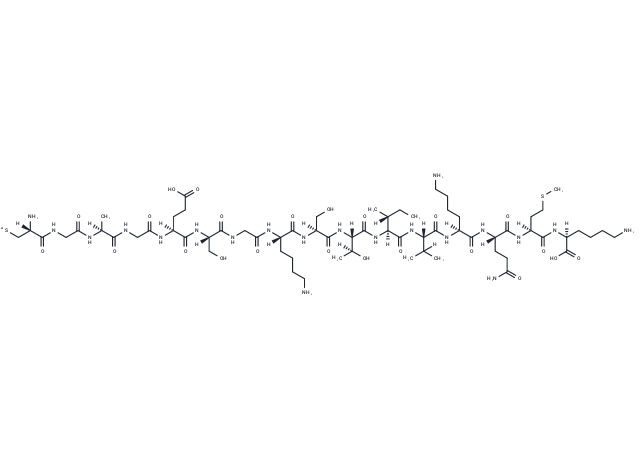Shopping Cart
Remove All Your shopping cart is currently empty
Your shopping cart is currently empty
Using specific antisera raised against synthetic peptides, we find that three distinct GTP-binding protein alpha subunits remain bound to the plasma membrane even after activation with nonhydrolyzable GTP analog. Trypsin cleaves each alpha subunit at a site near the amino-terminus and quantitatively releases the large fragment from the membrane. Previous results indicated that alpha subunits are essentially cytoplasmic proteins tethered to the inner surface of the membrane via an amino-terminal stalk.

| Pack Size | Price | USA Warehouse | Global Warehouse | Quantity |
|---|---|---|---|---|
| 5 mg | $100 | Inquiry | Inquiry | |
| 10 mg | $166 | Inquiry | Inquiry | |
| 25 mg | $231 | Inquiry | Inquiry |
| Description | Using specific antisera raised against synthetic peptides, we find that three distinct GTP-binding protein alpha subunits remain bound to the plasma membrane even after activation with nonhydrolyzable GTP analog. Trypsin cleaves each alpha subunit at a site near the amino-terminus and quantitatively releases the large fragment from the membrane. Previous results indicated that alpha subunits are essentially cytoplasmic proteins tethered to the inner surface of the membrane via an amino-terminal stalk. |
| Molecular Weight | 1623.89 |
| Formula | C66H118N20O23S2 |
| Relative Density. | no data available |
| Storage | keep away from moisture | Powder: -20°C for 3 years | In solvent: -80°C for 1 year | Shipping with blue ice/Shipping at ambient temperature. |
| Solubility Information | DMSO: ≥162.3 mg/mL, Sonication is recommended. |
| Size | Quantity | Unit Price | Amount | Operation |
|---|

Copyright © 2015-2025 TargetMol Chemicals Inc. All Rights Reserved.